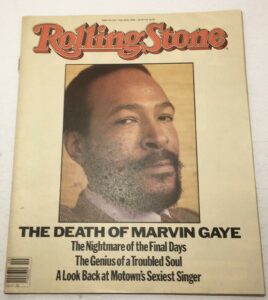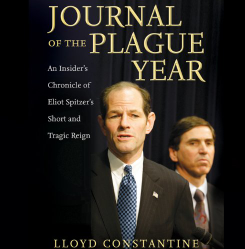The atrocity de la semaine in the scolding and scalding progressive media was committed by Jann Wenner, co-founder and former owner of Rolling Stone Magazine and co-founder of the Rock and Roll Hall of Fame, into which he was inducted in 2004.
Within a nanosecond of his crime (actually 24 hours) he was removed from the Hall’s board and Rolling Stone, which he ran for 52 years, expressed confusion about who that guy Wenner was/is.
 Why? Well, Wenner’s forthcoming book “The Masters” comprised of his interviews of seven rock ‘n’ roll icons does not, true to its title, include any Mistresses and the guys are all white; Dylan, Bono, Springsteen, Townsend, Garcia, Lennon, and Jagger. Since the book is not out yet and we’ve not yet deployed pre-cogs for the apprehension of pre-criminals, Wenner’s crime was committed in his messy and inarticulate explanation of why he chose these magnificent seven and no black guys or women of any color.
Why? Well, Wenner’s forthcoming book “The Masters” comprised of his interviews of seven rock ‘n’ roll icons does not, true to its title, include any Mistresses and the guys are all white; Dylan, Bono, Springsteen, Townsend, Garcia, Lennon, and Jagger. Since the book is not out yet and we’ve not yet deployed pre-cogs for the apprehension of pre-criminals, Wenner’s crime was committed in his messy and inarticulate explanation of why he chose these magnificent seven and no black guys or women of any color.
His bumbling attempt came in a boobytrapped interview conducted by David Marchese of The New York Times. The worst from Wenner was his response to Marchese’s – why no women – why no black guys, questions.
Wenner: “It’s not that they’re not creative geniuses. It’s not that they’re inarticulate, although, go have a deep conversation with Grace Slick or Janis Joplin, be my guest. You know, Joni [Mitchell] was not a philosopher of rock ‘n’ roll. She didn’t in my mind, meet that test. Not by her work, not by the other interviews she did. The people I interviewed were kind of the philosophers of rock. Of Black artists – you know Stevie Wonder, genius, right? I suppose when you use a word as broad as “masters” the fault is using that word. Maybe Marvin Gaye, or Curtis Mayfield? I mean, they just didn’t articulate at that level.”
If you care as much about rock as I do, go read and listen to the unexpurgated interview.[1] The sum and substance on his choice of “masters” shows him saying that these are the people he knew best, in most cases his friends and people who bore and bear the ‘same burdens’ as he had. But the assault on Wenner and Rolling Stone continues and includes the charge that during Wenner’s half-century running the magazine, female and black artists were given short shrift and even suppressed.
 So, I went to the videotape, the cover of every Rolling Stone in its first twenty years, totaling 501.[2] 312 of those covers featured rock stars with the rest showing movie figures, politicians, cartoons and a variety of other people and subjects. Rolling Stone’s circulation was almost entirely dependent on the cover. During those years the two most successful covers showed a shirtless O.J. Simpson and Linda Ronstadt in a red negligee. The least popular? One with singer Phoebe Snow. Selection of the cover was the biggest decision each issue, a matter of not just internal but external debate[3] and the subject of songs[4] and movies.[5]
So, I went to the videotape, the cover of every Rolling Stone in its first twenty years, totaling 501.[2] 312 of those covers featured rock stars with the rest showing movie figures, politicians, cartoons and a variety of other people and subjects. Rolling Stone’s circulation was almost entirely dependent on the cover. During those years the two most successful covers showed a shirtless O.J. Simpson and Linda Ronstadt in a red negligee. The least popular? One with singer Phoebe Snow. Selection of the cover was the biggest decision each issue, a matter of not just internal but external debate[3] and the subject of songs[4] and movies.[5]
Of those 312 Rolling Stone covers in which Wenner always had final say[6], what is found? Well, six covers had Tina Turner, including the second cover in 1967. Jimi Hendrix also had six – four after he died including the “Twentieth Anniversary” cover showing an image from and proclaiming his performance at the 1967 Monterey Pop Festival “The Greatest” live performance. Janis Joplin also had six covers and also four after her death. Grace Slick was on four covers, the early Michael Jackson on five, Linda Ronstadt on six, early years Prince on four. The aforementioned Black and female artists each had more covers than Clapton, Elvis P., Elvis C., Rod Stewart, Led Zeppelin, The Beach Boys and U2/Bono. Marvin Gaye had only two covers, the second of which appeared the week after his death accompanied by this.
 Rolling Stone commentary: “A great artist – of the magnitude of Michaelangelo and the sweetness of Mozart – is dead, and all we can do is praise the power that brought him forth.”
Rolling Stone commentary: “A great artist – of the magnitude of Michaelangelo and the sweetness of Mozart – is dead, and all we can do is praise the power that brought him forth.”
During those twenty years I read the magazine cover to cover and often trusted it more than The New York Times for the truth, if not the facts about the important political and social events, trends and occurrences, including “The War,” the anti-war, drugs and Woodstock. I’m grateful to Jann Wenner for starting Rolling Stone and running it. And although he’s human and gave a shitty interview, in the grand plus/minus scoring he is way ahead and we much better for it.
[1] The firestorm followed the Times publication of an edited version, but after Wenner was beheaded the Times published the unedited version and lots of other articles, mostly with additional condemnation.
[2] Don’t cry for me Pasadena, it wasn’t that hard. These 501 and all the covers from the succeeding 30 years are in a book titled “Rolling Stone 50 Years of Covers” whose cover is RS Cover 335, a photo of naked John Lennon kissing Yoko. The back cover is RS Cover 1248, a photo of Adele.
[3] Like the one that occurred when Daryl Hannah graced the cover despite the lead article being about Chrissie Hynde and her Pretenders.
[4] “The Cover of Rolling Stone” by Dr. Hook & The Medicine Show.
[5] “Almost Famous” among others.
[6] At least according to my dear friend of blessed memory Harriet Fier, Rolling Stone’s Managing Editor 1978-80.



OK, read the full interview. I think this one is more telling.
“Other than this one key fact that the rape described actually was a fabrication of this woman, the rest of the story was bulletproof.”
It was Downbeat that I read cover to cover. When Rolling Stone, usually not for the music articles. I’m not a rocker but I know enough about black & female core contributions to Blues, R&B, & early rock to be shocked that the founder of Rolling Stone is so superficial about whom he would bring up (to put down or otherwise) when asked to discuss core contributions. This doesn’t make him a bad person. As to the interview, seems a jerk. But if shallowness & being a jerk disqualified music world people from earned status, lots of idols would fall.
I went back and read the NYTimes interview, which, to be fair and to borrow one of my daughter’s favorite Gen-Z terms, is cringy. Cringy in the extreme.
Now if this were an interview with a hedge fund guy on his golf course in Greenwich, I wouldn’t be surprised. But Jann Wenner? He should know better. And if he doesn’t, his PR firm should have schooled him on this. If there is one trope you need to steer clear of it is how “articulate” a group of people are when defined by race or gender.
To be clear, I see nothing wrong with his list, which is personal on the one hand and relies on a dead historical record on the other. If I were handling his PR, my answer would have been:
Let me be clear, if I had the ability to do so, Jimi would have been the first name on this list. His death was the singular tragedy of the rock era, which needed a genius to take rock to the next level artistically.
The bottom line is that he really does deserve some time in the woodshed. Frankly, I’m shocked.